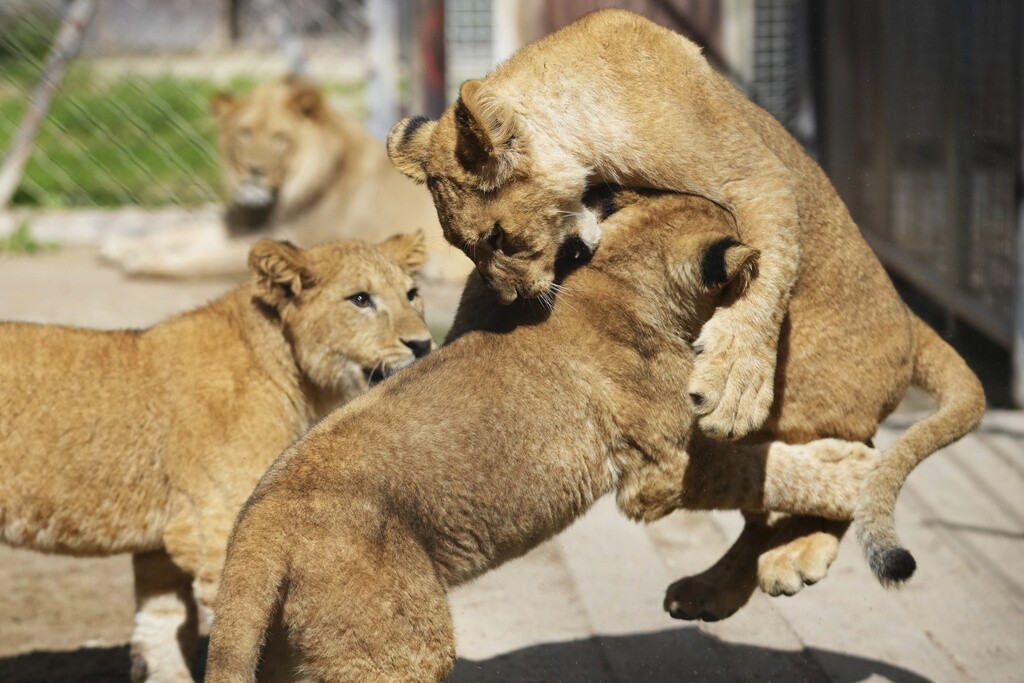Four Barbary lion cubs were born recently in a Czech zoo, a vital contribution for a small surviving population of the rare lion that is extinct in the wild.
The three females and one male were seen playing in their outdoor enclosure at Dvůr Králové Safari Park on Wednesday, enjoying themselves under the watchful eyes of their parents, Khalila and Bart.

That will change soon. As part of an international endangered species program that coordinates efforts for their survival in captivity, the cubs will be sent to other participating parks, including the Beersheba zoo in Israel.
Chances are that might not be the end of the story for the animal.
Dvůr Králové Deputy Director Jaroslav Hyjánek said that while preliminary steps have been taken for a possible reintroduction of the Barbary lion into its natural habitat, it’s still a “far distant future.”
The majestic member of the Northern lion subspecies, the Barbary lion once roamed freely its native northern Africa, including the Atlas Mountains.
A symbol of strength, they were almost completely wiped out due to human activities. Many were killed by gladiators in Roman times, while overhunting and a loss of habitat contributed to their extinction later.
IN CASE YOU MISSED IT | Denmark zoo asks people to donate their small pets as food for captive predators
The last known photo of a wild lion was taken in 1925, while the last individual was killed in 1942.
It’s believed the last small populations went extinct in the wild in the middle of the 1960s.
Fewer than 200 Barbary lions are currently estimated to live in captivity.
Hyjánek said that after initial talks with Moroccan authorities, who have not rejected the idea of their reintroduction, a conference of experts has been planned to take place in Morocco late this year or early 2026 to decide whether it would make sense to go ahead with such a plan in one of the national parks in the Atlas Mountains.
Any reintroduction would face numerous bureaucratic and other obstacles. Since the lion has not been present in the environment for such a long time, the plans would have to ensure their protection, a sufficient prey population and cooperation and approval from local communities.
Hyjánek said such a move is still worth trying if it turns out to be sustainable.
“It’s important to have such a vision for any animal, “ he said. “Without it, the existence of zoos wouldn’t make sense.”


